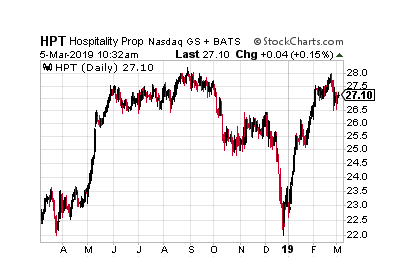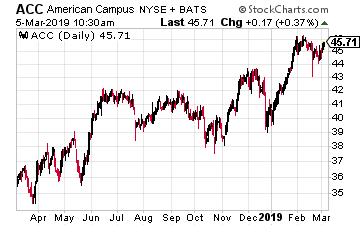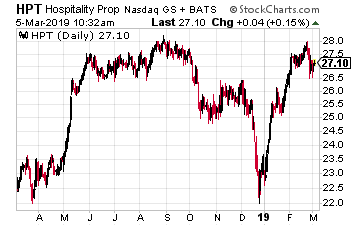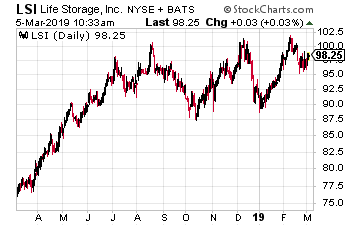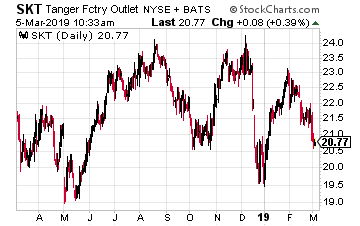
Big technology companies have been under a lot of political and social pressure recently, mostly because said technology companies have become the be-all, end-all of society. The worry is that these companies are gaining too much power, and that too much power is never a good thing. Big technology companies that provide “free” services by monetizing user data have borne the brunt of it, as such companies are coming under heavy scrutiny for the way they use personal data to make money.
A lot of these concerns haven’t materialized into anything other than talk. But there’s one potential legislation which big tech investors should be aware of, if not concerned about: the data dividend.
The concept is simple: tech companies should pay you for your data. Your data is valuable. It’s being monetized broadly. Since you technically own your own data, when your data does get monetized broadly, you should get a piece of those rewards. That piece is the data dividend, and it would essentially amount to a percent of the company’s data-derived revenues.
The idea isn’t new. The academic world has been discussing the idea for some time. Washington state tried to pass data dividend legislation in 2017. But attempts to implement a data dividend have been too far and few between to mean anything. Until now. California Governor Gavin Newsom recently proposed the idea, and the proposition carries weight both because of when (amid heightened data privacy concerns) and where (California is home to many of the world’s tech giants, and is ahead of the curve when it comes to data protection laws) it was proposed.
As such, while it’s still far from a sure thing, a data dividend is now closer to reality than ever before. That’s bad news for any big tech company which uses consumer data to make money.
Which stocks are most affected by a potential data dividend? Let’s take a deeper look.
Facebook (FB)
Data-Related Revenue (% of Total Revenue): $55 billion (99%)
At the top of this list is a social-media giant which essentially makes all of its money from consumer data, meaning that essentially all of its revenues are theoretically subject to a data dividend.
Facebook (NASDAQ:FB) rakes in over $55 billion (and growing) in ad revenue per year. This money comes from advertisements across its four social media apps — Facebook, Instagram, Messenger and WhatsApp — and is all the byproduct of leveraging user data to incorporate relevant and targeted ads. Facebook is arguably the best in the business at using this data to create effective ad campaigns. They also have more data than pretty much anyone in the world.
But those positives also mean that Facebook could be a big loser if the data dividend idea gains national and global traction. Even if a data dividend amounts to just 2% of revenues, that would equate to over $1 billion per year for Facebook. And, that extra cost would come at a time when costs are dramatically rising for improved data protection.
In the big picture, the data-dividend risk isn’t a reason not to own FB stock. FB stock is a long-term winner supported by the stickiest digital ecosystem in the world. But it is something to be aware of and monitor.
Twitter (TWTR)
Data-Related Revenue (% of Total Revenue): $3 billion (100%)
The second of the possible data dividend stocks is another social media company, which makes essentially all of its money through either leveraging consumer data to create ad campaigns or just straight-up selling that consumer data.
Twitter (NYSE:TWTR) rakes in about $3 billion per year in data-related revenue. Roughly $2.6 billion of that is from ads — Twitter leverages user data to create targeted ad campaigns. The other $400 million-plus comes from Twitter’s data licensing business, which is essentially Twitter just selling user data. Thus, if a data dividend were to be introduced on a global scale, all of Twitter’s revenues would theoretically be subject to that dividend.
That’s not a great thing. But it’s not a deal breaker, either. Much like Facebook, Twitter has created an ultra-sticky digital service. That service is only getting stickier, as Twitter is increasingly becoming a go-to and irreplaceable platform for consumers of all shapes, sizes, and backgrounds to voice their opinion. Thus, while the data-dividend risk should be monitored, it isn’t a reason to sell TWTR stock.
Snap (SNAP)
Data-Related Revenue (% of Total Revenue): $1.2 billion (almost 100%)
Third of the data dividend stocks is yet another social media company that makes essentially of its money through digital advertising, which comprises leveraging user data for targeting purposes: Snap (NYSE:SNAP).
To be sure, Snap does have a hardware business through Spectacles. But that business has struggled to gain traction, and revenue from Spectacles thus far has been immaterial. Thus, of Snap’s $1.2 billion in revenue last year, almost all of it was from digital ads. That means almost all of it would be theoretically subject to a data dividend.
Again, this isn’t a deal breaker for Snap. But it is a bigger concern for Snap than it is for Facebook and Twitter. Why? Because Facebook and Twitter are already profitable, and they can absorb a 2% hit on revenues without materially impacting profitability. Snap cannot. The company is far from profitable, and needs a lot more scale in order to be profitable. Thus, the data dividend risk is much bigger for SNAP stock, than it is for FB or TWTR stock.
Alphabet (GOOGL,GOOG)
Data-Related Revenue (% of Total Revenue): $116 billion (85%)
The first non-social media company on this list also happens to be the world’s largest digital advertiser, and therefore bears substantial exposure to a potential data dividend.
Alphabet (NASDAQ:GOOG,GOOGL) isn’t all digital advertising. The company has hardware, cloud, and AI-related businesses which aren’t built on the back of user data. But Alphabet is mostly digital advertising. Of the company’s near $140 billion in revenue last year, about 85% of it came from digital advertising through Google, YouTube, and other online ad networks and properties. Thus, if a data dividend were to be implemented, Alphabet would have to pay a large sum back to consumers.
This isn’t a big deal for GOOG stock. For starter’s, Google is the backbone of the internet, and YouTube is very sticky in the free, online entertainment world. Neither of those ad businesses will be hit that hard by a data dividend. Also, of all major digital advertising players, Alphabet is the one of the most diversified, with burgeoning businesses in cloud, hardware, and AI.
Overall, then, any negative impact on GOOG stock from a data dividend will be mitigated by growth drivers elsewhere in the business.
Yelp (YELP)
Data-Related Revenue (% of Total Revenue): $907 million (96%)
Another company impacted by a potential data dividend isn’t known as a digital advertising giant, yet still derives a majority of its revenue from digital ads that leverage user data.
Yelp (NASDAQ:YELP) reported net revenue of roughly $943 million last year. About $907 million of that, or 96%, was from digital advertising. Thus, although Yelp doesn’t serve consumers ads in the same way that Facebook, Twitter, or Snap do, the company still runs ads based on user data, and those ads are the big driver of the company’s business. Consequently, a data dividend would theoretically be applied to Yelp’s entire business.
A data dividend is just another risk to add to the long list of things not to like about YELP stock, including valuation, competition, slowing growth, lack of scale, and lack of a moat. As such, there’s simply too much not to like here. The data dividend risk is just another reason to stay away from YELP stock.
Amazon (AMZN)
Data-Related Revenue (% of Total Revenue): $10 billion (~4%)
Although the next company on this list also isn’t known as a digital advertising giant, it is quickly building out a giant digital advertising business which is theoretically subject to a data dividend.
Amazon (NASDAQ:AMZN) isn’t known for digital ads. The company is known as an e-commerce and cloud giant. Nonetheless, Amazon is leveraging its huge user-base and reach across Amazon, IMDb, and other digital properties to create a huge and rapidly growing digital ad business. That digital ad business generated $10 billion in revenue last year. To be sure, that’s less than 5% of Amazon’s total revenues. But it’s a much bigger portion of profits (digital ad sales have way higher profit margins than e-commerce sales).
That fact alone is why the data dividend is actually a sizable risk for AMZN stock. Amazon has been counting on ramp in the digital ad business to drive profits higher, while margins in the e-commerce business remain largely weak due to competition. If the digital ad business gets set back due to a data dividend, that would be a set back to the whole Amazon profit growth narrative. As such, while the data dividend risk isn’t a deal-breaker, it is something which AMZN investors should closely monitor.
Microsoft (MSFT)
Data-Related Revenue (% of Total Revenue): More than $12 billion (more than 11%)
Last, but not least, is another big tech company which isn’t known for digital ads, but which nonetheless is one of America’s largest digital advertisers, and consequently has broad exposure to a potential data dividend.
Microsoft (NASDAQ:MSFT) isn’t known for digital advertising or using personal data to generate revenue. Still, the company has a big digital ad business. Microsoft’s search advertising revenues measured $7 billion last year. LinkedIn revenues were around $5.3 billion. The company also makes ad revenue through other segments, but doesn’t break that out. Thus, Microsoft’s total data-related ad revenues measured in excess of $12 billion last year, and likely closer towards $15-20 billion. That would represent about 15% of Microsoft’s total revenues.
Because Microsoft isn’t known for digital advertising, the data dividend risk isn’t a big deal for MSFT stock. The big growth narrative here is cloud, not digital ads. Thus, Microsoft can afford a set back in the digital ad business, so long as the cloud business remains healthy. At the end of the day, as go the cloud businesses, so goes MSFT stock.
As of this writing, Luke Lango was long FB, TWTR, GOOG, and AMZN.

